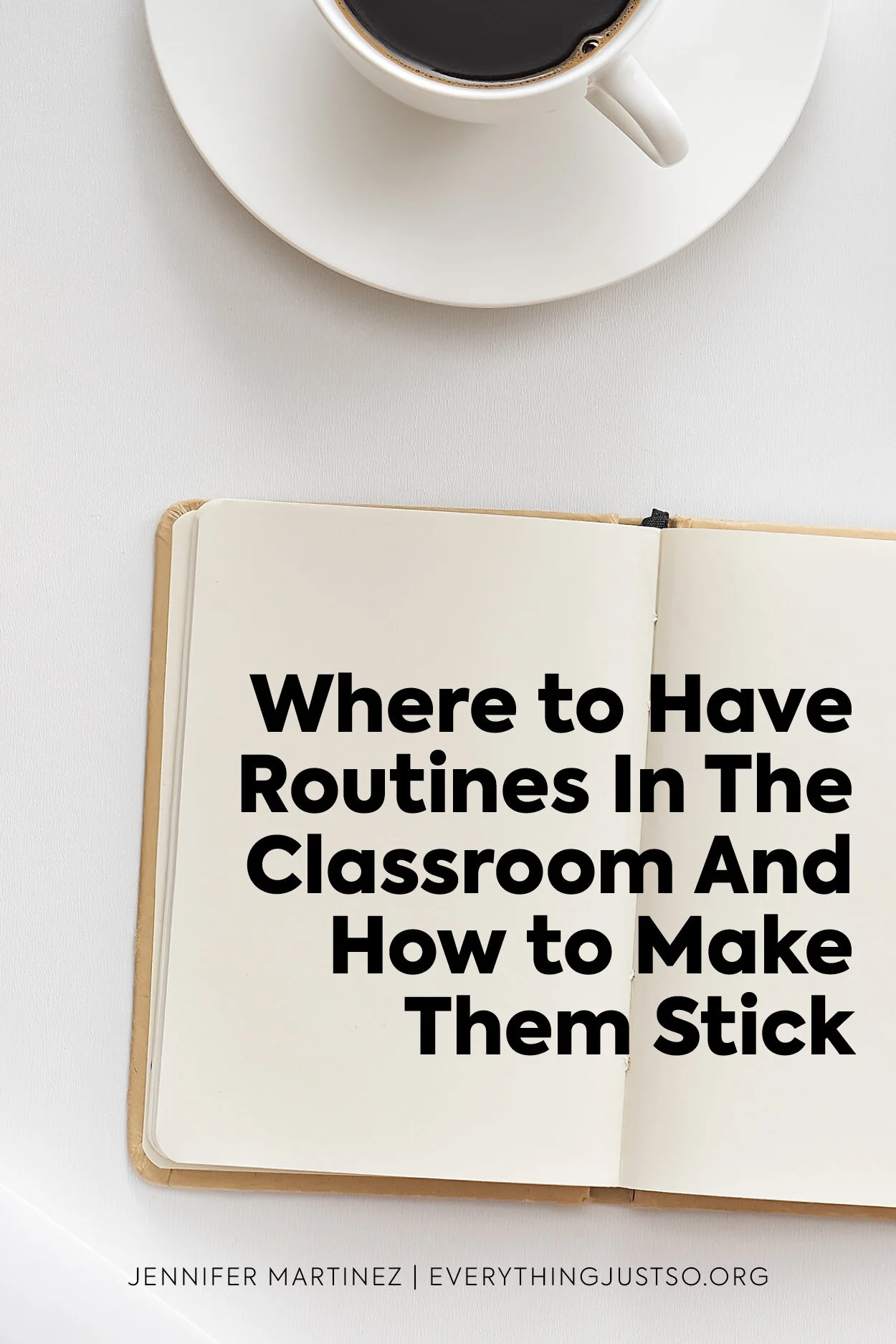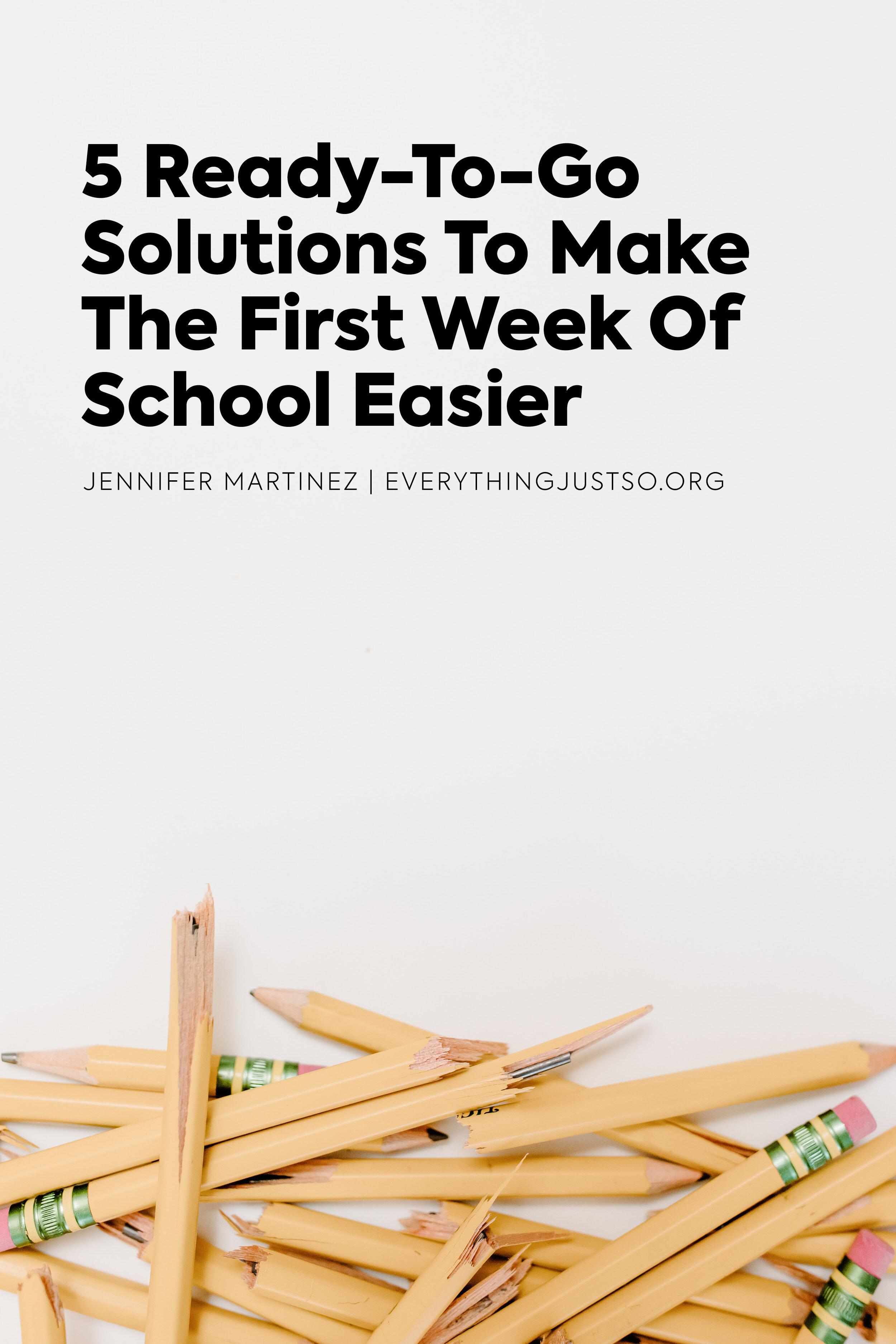3 Benefits of Classroom Routines and How to Make Them Stick
One of the best pieces of advice I could give to any teacher is to establish (and stick to) daily classroom routines at the very beginning of the year.
Not only will creating routines help you manage all there is to accomplish in the classroom every day, but it also provides much needed structure for your students.
Consistent routines are one of the best strategies for avoiding behavior management issues as well.
Let me share with you a few tips on how classroom routines benefit you, the best places to have routines, and advice for sticking to them.
Before we get started, let’s make sure we understand the difference between a system and a routine.
A system is a step-by-step process by which a specific task is completed. The process is easily repeatable. Think of a system as the most efficient, time saving way of completing a particular task. For example:
Task = Passing out papers students will need during a period or day.
Without a system = Every time her students need a worksheet, the teacher stops instruction and hands them out individually to each student.
System = The teacher prepares packets of papers her students will need during the day and places them in a designated spot by the door. As students enter the room, they pick up a packet and are prepared for the entire class.
A routine is an action that is completed regularly. Lesson planning is probably part of your routine because it’s a specific action you must complete on a regular basis. Routines work best when they’re scheduled for specific days, times, and/or places.
Systems and routines work together to streamline and simplify your teaching life. For example:
You develop a system for lesson planning that is efficient and streamlined. Then you make it a routine by scheduling to do the work every Thursday after school.
Make sense? If you need more information on systems, you can find it here. If you’re ready to talk about routines, here are a few benefits and places to have them.
3 Benefits of Having Classroom Routines
Your students will thrive
Research shows that children thrive when they have boundaries, structure, and predictable routines. Predictability helps develop a sense of safety and security. I've found that even the most difficult students do well when they know what to anticipate each day.
In addition, routines allow students to have greater independence in the classroom. Rather than having to walk students through each part of the day, they learn procedures and then can work independently. This frees up a great deal of time for other important tasks, such as conferring and addressing group needs.
Your workload decreases
Rather than feeling pressured to recreate the wheel each week, having predictable routines enables you to focus on the content rather than the structure of your lessons or even your day as a whole.
Your memory improves
Ok, maybe in a roundabout way. When you have a structured daily routine, there's no more forgetting or guessing what's coming up next or still left to do.
The Best Places To Have Classroom Routines
Routines For Students:
The beginning of a day. Each morning, students should come in knowing what is expected of them - where to unpack, where to place their belongings, how to show that they are buying lunch, etc. Develop a list of steps students should complete as they enter the classroom that will help prepare them for success throughout the day. Provide morning work that engages students and prepares them for that day's work.
The end of the day. Have students complete tasks that help wind down the day and prepare them to leave. Writing assignments in agendas, collecting materials to take home, and completing classroom jobs are all ways to review the day's work while building responsibility for themselves.
While working in centers or stations. Do you use centers in your classroom? Many teachers do and have rotations down to a science. While the work completed in each station should change throughout the year, expectations for completing it, finding materials, behavior during, and transition to a new one should not.
While working independently or in small groups. During my reading or writing workshop time, students were often responsible for working independently or in a group. At the beginning of the year, we spent several weeks learning the rules for finding the perfect work spot, choosing partners, maintaining a personal book box, etc. so that this flexible time went smoothly during the rest of the year.
The more time you spend teaching these types of routines at the beginning of the year, the fewer behavior issues and lost time you'll have later on.
Routines For Teachers:
Your workload. Make a specific schedule of when you will plan, run copies, return emails, and contact parents. No more running around like a crazy person trying to run copies before the bell rings for your next class or staying three hours late to catch up on parent emails.
Instead, set one morning each week to run copies for the following week and set aside specific days or nights to lesson plan. Create a schedule for sending emails each month just to check in with parents. Making phone calls or sending emails to 30+ parents is much more manageable when you schedule just four or five a week.
Your workday. Do you have set work hours? If not, I encourage you to create some. Set boundaries for when you will be in your school building and leave when your time is up.
Although I hate mornings, I arrived in my building an hour and a half before school started each day. Honestly, it was brutal getting up that early however, I found that when I did - my productivity increased. Only a handful of others ever ventured into the building at that time and so there were few distractions to deter me from getting work done. Plus, I found myself with uninterrupted time with the copier and laminator.
That alone saved me enough time to make the getting up early more than worth it!
3 ways to stick to Classroom Routines
Determine importance
Like everything else we've discussed in this series, you must first decide what's important. It's much easier to stick to a routine when you know that everything inside of it is important. It isn't filled with "stuff" or fluff - just what matters to the success of yourself and your students.
Set boundaries
This was the absolute hardest for me to do. My work was never done, so I never felt that I could "turn it off." I went in early, took work home during the week, and spent much of my weekends working.
Don't make the same mistake.
Although our job is one of the most important, it is a job. And burning yourself out won't make you worthwhile to anyone - especially your students.
Determine the workload you can healthfully handle that still leaves margins for relaxation and a personal life.
This includes setting boundaries for yourself at work. When you're at work, be at work. Resist the urge to get on Instagram and see what your bestie is up to. Unless it's your dedicated planning time, steer clear of Pinterest in search of an activity for an upcoming unit. Unplug and utilize your planning periods and other breaks to get as much completed during your workday as possible.
Have an accountability partner
I have one amazing friend who first began as a coworker. We became fast friends after learning how much we had in common, including our lack of boundaries when it came to our teaching workload. Too many days we were the first to arrive at school and the last to leave. When we got together on the weekends, our conversations always landed on how overwhelmed we were and how we had to make a change.
After this went on for far too long, we decided to make a pact. We set boundaries for ourselves and wrote out steps for implementing change over each of four quarters during the year. She typed up a contract (in Comic Sans, mind you) and even came up with a few repercussions should one of us break the contract. She called it our What About Bob Baby Steps Contract (have you seen the movie?) and I printed two copies on bright green neon paper so that I wouldn't miss it at work or at home (in case the CS didn't get my attention!).
I'll admit, I wasn't perfect at sticking to the plan. However, it went a long way to grabbing my attention, forcing me to determine importance in my work life, and implementing changes. If it weren't for my accountability partner, I doubt I would have stuck to any of it.
Looking for more help?
If you feel like these posts are a great start to making positive changes, but find yourself needing more support to follow through - you’re not alone. Blog posts are a great tool for identifying key problem areas and then providing simple solutions, but they can’t walk you through a step-by-step process to get the work done.
Fortunately, I have the solution that can.
I created Organized Just So™ just for teachers like you who are searching for a way to get organized and stay organized for good.
And it’s not just about getting all your “stuff” organized, but managing your time and reducing your workload too.
It’s about creating and implementing systems that make your job easier, so you work less and have more time for what matters most to you. Click here to learn more.
Click the image below to save these ideas for later:













